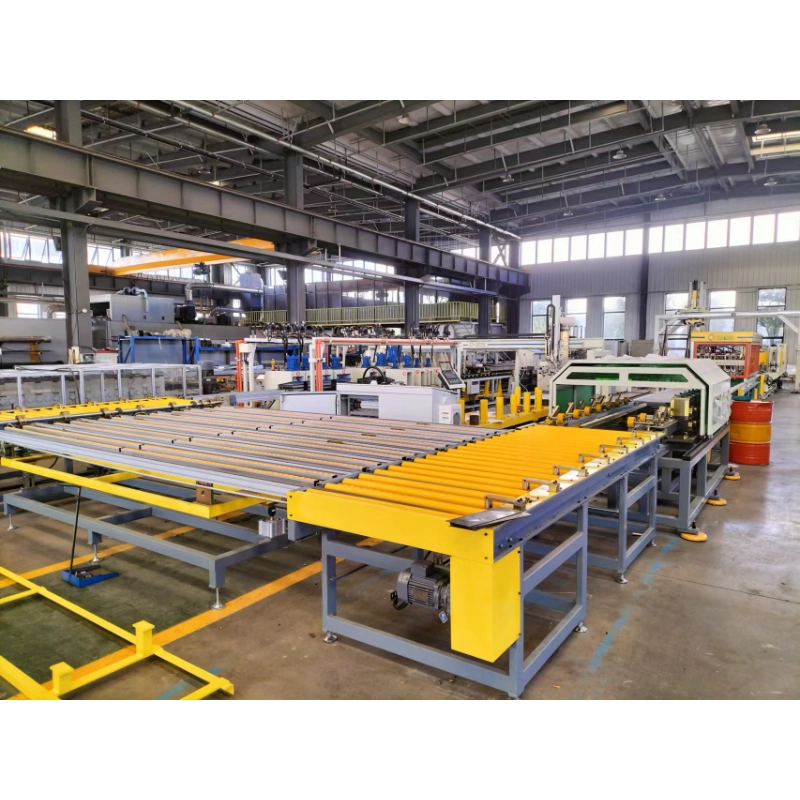The freezer assembly line is a groundbreaking innovation in the manufacturing process, fundamentally transforming how home freezers and other refrigeration appliances are produced. This assembly line revolutionized industrial production by increasing efficiency, reducing labor costs, and making high-quality freezers more accessible to consumers. In this article, we will explore how the freezer assembly line reshaped the appliance manufacturing industry, its major benefits, and the long-lasting effects it has had on food preservation and refrigeration technology.

The Rise of Home Freezers
Before the advent of home freezers, food preservation methods were often rudimentary. Iceboxes, which relied on blocks of ice, were used to keep perishables fresh, but freezing food at home was rare. The development of refrigeration technology in commercial settings marked a turning point, but it wasn’t until the invention of domestic freezers that the true potential of freezing food at home was realized.
In the 1940s and 1950s, home freezers emerged as essential household appliances. However, the introduction of the freezer assembly line made it possible to mass-produce these appliances at a scale that met the growing consumer demand, making home freezers more affordable and widely available.
What Is a Freezer Assembly Line?
A freezer assembly line refers to a production method where freezers and other appliances are assembled in a sequence along a moving conveyor belt. Each station on the line is dedicated to a specific task, which streamlines the manufacturing process, increases speed, and reduces human error. This assembly process allows freezer manufacturers to produce high volumes of units efficiently while maintaining consistent quality.
The process includes steps such as constructing the freezer casing, adding insulation, installing refrigeration systems, connecting electrical components, and testing each unit for performance. The result is an affordable, high-quality freezer that meets the needs of consumers.
How the Freezer Assembly Line Transformed Appliance Production
1. Mass Production of Affordable Freezers
Before the freezer assembly line, manufacturing freezers was a labor-intensive process, and production was limited. The assembly line for freezers changed this by enabling manufacturers to produce units in large quantities. This shift lowered production costs, made the final product more affordable, and allowed companies to meet the growing demand for home refrigeration appliances. As a result, freezers became standard in most households, revolutionizing food preservation.
2. Increased Speed and Efficiency in Manufacturing
The introduction of the freezer assembly line drastically improved production speed. Unlike traditional methods where each freezer was built manually, the assembly line allowed for simultaneous, efficient work at multiple stages of production. As each unit moved along the line, workers specialized in specific tasks, increasing overall manufacturing efficiency. This streamlined process helped manufacturers scale up production and meet the increased demand for affordable freezers in a shorter amount of time.
3. Consistency and Standardization of Freezer Models
One of the most significant benefits of the freezer assembly line is the ability to produce consistent, high-quality products. By standardizing each step in the production process, freezer manufacturers were able to create identical units with consistent quality and design. This standardization reduced defects, improved reliability, and helped build consumer trust in appliance brands and their products.
4. Reduction in Labor Costs and Higher Output
With the freezer assembly line, the need for highly skilled labor was reduced. Workers performed repetitive tasks at designated stations, which allowed manufacturers to keep labor costs low while maximizing production output. This increase in productivity meant more freezers could be produced in less time, allowing manufacturers to cater to growing demand without significantly increasing operational costs.
5. Advancements in Manufacturing Technology
The freezer assembly line didn’t just improve speed and efficiency; it also encouraged the integration of new manufacturing technologies. With advancements like automated systems for refrigerant filling, electrical installation, and functional testing, the production process became even faster and more precise. These technological improvements reduced the risk of human error and enabled freezer manufacturers to produce large quantities of units at higher quality.
6. Expanding Global Reach and Market Access
The mass production capabilities of the freezer assembly line had far-reaching economic effects. As manufacturers were able to produce freezers at lower costs, freezers became widely available around the world, not just in developed countries but also in emerging markets. This accessibility helped fuel the global expansion of the frozen food industry and created new business opportunities across industries like food storage, transportation, and retail.
The Lasting Impact of the Freezer Assembly Line
The freezer assembly line was a pivotal development in the appliance manufacturing industry. It enabled manufacturers to meet growing consumer demand by producing affordable home freezers at a higher rate and with improved quality. By enhancing production efficiency, reducing labor costs, and encouraging technological innovation, the assembly line revolutionized the home appliance market and helped make frozen food storage a common feature in households worldwide.
As we look to the future of manufacturing and refrigeration technology, the legacy of the freezer assembly line continues to influence modern production processes. From the introduction of advanced automation to the global distribution of appliances, the freezer assembly line exemplifies the profound impact of industrial innovations on global economies.

